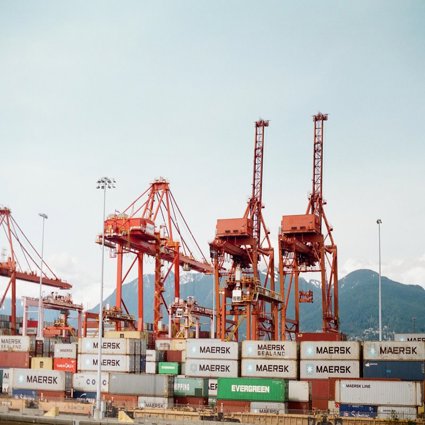
What does the UK export and to where?
This lesson looks at what products the UK exports, and which countries the UK exports the most to
This lesson encourages pupils to examine global trade through a different perspective: what the UK exports to other countries around the globe. It has cross-curricular links with maths and provides pupils the opportunity to interpret and evaluate data related to global trade. Pupils learn about the different items the UK exports to other countries and which countries the UK exports the most to. They create a bar chart to show the types of goods the UK exports. They conclude it is mainly manufactured, high-value items that require skill and high-tech machinery to produce that the UK exports and consider the reasons for this trend.
Cross-curricular links
Mathematics: National Curriculum KS2 Ma 4 (Data Handling)
Pupils to select and use data handling skills to discover trends in global trade and identify data needed to solve word problems related to trade.
Ma 4 (2a) Solve problems involving data; b) interpret tables, lists and charts involving data on global trade, construct tables and charts; d) Use the terms ‘mode’ and ‘range’ to describe data sets; e) recognise whether data is discrete or continuous; f) draw conclusions from statistics and graphs.
Key questions
What products does the UK export to other countries?
What are ‘trade links’ and ‘trade partners’?
Which countries does the UK export the most to?
Does the UK export raw materials or manufactured goods?
Why does the UK export this type of goods?
Additional resources needed
-
Graph paper/ computer access
-
Rulers
Starter
Highlight to the pupils that so far their learning has focused upon imports into the UK from other countries around the globe.
Explain that today’s lesson involves looking at global trade from a different perspective. It focuses upon what products the UK exports to other countries. Begin the What does the UK export Powerpoint presentation to revisit previous learning: the definition of import and export.
Main Activity
Explain the table on the PPT shows data of where the UK exports the most to. Explain these countries are the UK’s ‘top trading partners’ because the most money is made through trade with these countries.
Pose the questions:
-
Are the countries the UK exports to more or less developed countries?
-
Which country is the UK’s top trading partner?
Highlight that data related to global trade can be read more clearly when it is presented in graphs. Explain a key skill in geography is presenting geographical data in graph form.
Show the pie chart and bar chart and ask pupils to discuss with their talk partners what the graphs tell us about the UK’s trading partners and choose pupils to feedback to the rest of the class.
Explain that there are patterns of global trade: usually more developed countries export valuable manufactured goods such as electronics and cars and import cheaper primary products such as tea and coffee.
The UK is a more developed country and exports valuable manufactured goods.
The physical and human geography of the UK determines what we export. The climate, land mass available for growing, and natural resources (physical) and skills, wealth and education/skills of population (human).
Pose questions to the pupils:
-
Could the UK export coffee beans or gold? Why? (Points to discuss: UK climate is temperate maritime so certain things cannot be grown, natural resources available off shore such as fish and oil or underground such as diamonds, gold, copper).
-
How might the skills and education of the population affect what we export? (Points to discuss: highly skilled and educated workforce, high average income, cost of labour is higher than some less developed countries).
Pupils interpret data and create graphs related to the top 10 exports of the UK.
They use the table on the PPT and UK Exports Table handout (see downloadable resources) to create their own table ordering the top ten UK exports.
Next they create a bar chart either on graph paper or using a computer graph program such as Excel / 2Simple2Graph. Ensure they label axis appropriately and include a clear title.
Pupils use the self-assessment checklist on the PPT to ensure they have completed the task properly.
Extension for high ability mathematics pupils
Pupils create a pie chart with percentages to show to the top ten UK exports.
First they add the total amount of money generated (£88.5 billion), then they find out what percentage of the total money generated from the top UK exports each industry makes.
e.g. Medicines: 16.9 x 100 = 19% (rounded down)
88.5
Plenary
Pose the following leading questions for whole class discussion:
-
What have you discovered about the products which the UK exports? Does this surprise you?
-
Does the UK export valuable manufactured products or raw materials?
-
How does the human and physical geography of the UK affect what we export?
File nameFiles
File type
Size
Download
